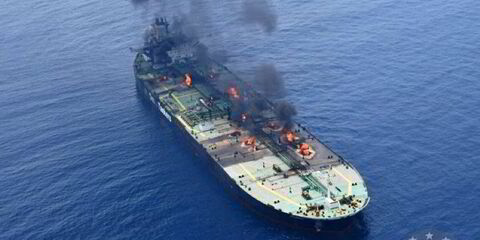Last week’s sanctions by the US Treasury Department against Iran’s petroleum industry could mean mainstream VLCC cargoes increase by roughly 5% of the current fleet.
That is the view of Jefferies lead shipping analyst Omar Nokta, who dissected effects of the measures in a note to clients on Monday.
‘Dark’ cargoes depleted
His forecast is based on the assumption that any drop in Iranian exports to weaker levels seen between 2019 and 2022 is made up in full by other producers.
Should that happen, the cargoes would move on vessels owned by mainstream carriers rather than the “dark fleet”, a shadowy network of tonnage that is currently moving the Iranian barrels.
Iran’s exports averaged 1.75m barrels per day in the third quarter, up from 1.45m bpd during the corresponding period of 2023, Jefferies reports.
Both numbers are up markedly from the 300,000 bpd exported throughout 2022.
“These latest sanctions could make it difficult to sustain the current elevated levels and could act as a deterrent for further illicit trading actions by market players,” Nokta wrote.
The analyst drew a comparison with the Treasury’s 2019 sanctions against 50 VLCCs under the control of China’s Cosco, which were accused of illicit trading with Iran.
The measures temporarily shot VLCC rates from about $40,000 per day to north of $100,000 per day during the final months of 2019 while boosting rates in other crude and clean vessel classes as well.
“While a similar sanctioning by the US of this magnitude is unlikely, these latest sanctions could affect Iran’s ability to maintain exports at current levels,” Nokta wrote.
The benefit could work out to about 40 additional VLCCs, he said.
Investors did not seem to be moved by the analysis at first blush.
Shares of VLCC bellwether Frontline fell nearly 4% to $23.31 in afternoon trading on the New York Stock Exchange.
VLCC pure-play DHT Holdings dropped close to 3% to $11.38.
International Seaways, whose mixed fleet includes VLCCs, was down 2% to $50.79.



